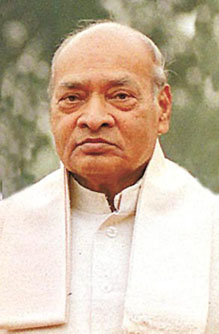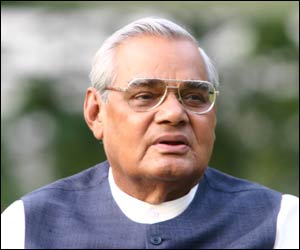PV Narasimha Rao
One more legendary Prime Minister of India Mr PV Narasimha Rao, an (un)forgotten Hero, the TRUE and ACTUAL initiator of Economic Reforms in India. The common in Mr Vajpayee and Rao is, that they both are simple, humble, noble and down to earth persons. Did not accumulated any money using their official positions. One more interesting similarity between them is, Mr Vajpayee is poet and Mr Rao is a linguist.
Pamulaparti Venkata “Narasimha Rao” (28 June 1921 – 23 December 2004) was an Indian lawyer, politician, and activist who served as the ninthPrime Minister of India (1991–1996).
*** Mr PV Narasimha Rao led an important administration, overseeing a major economic transformation and several home incidents affecting national security of India. Rao who held the Industries portfolio was personally responsible for the dismantling of the Licence Raj as this came under the purview of the Industries Ministry. He is often referred to as the “Father of Indian Economic Reforms”.
Rao accelerated the dismantling of the license raj, reversing the socialist policies under the government of Rajiv Gandhi. He employed Dr. Manmohan Singh as hisFinance Minister to embark on historic economic transition.
With Rao’s mandate, Dr. Manmohan Singh launched India’s globalization angle of the reforms that implemented the IMF policies to rescue the almost bankrupt nation from economic collapse. Rao was also referred to as Chanakyafor his ability to steer tough economic and political legislation through the parliament at a time when he headed a minority government.
Economic Reforms
Rao’s major achievement is generally considered to be the liberalization of the Indian economy. The reforms were adopted to avert impending international default in 1991. The reforms progressed furthest in the areas of opening up to foreign investment, reforming capital markets,deregulating domestic business, and reforming the trade regime. Rao’s government’s goals were reducing the fiscal deficit, Privatization of the public sector, and increasing investment in infrastructure. Trade reforms and changes in the regulation of foreign direct investment were introduced to open India to foreign trade while stabilizing external loans. Rao chose Manmohan Singh for the job of Finace Minister, who is an acclaimed economist, played a central role in implementing these reforms.
Major reforms in India’s capital markets led to an influx of foreign portfolio investment. The major economic policies adopted by Rao include:
- Abolishing in 1992 the Controller of Capital Issues which decided the prices and number of shares that firms could issue.
- Introducing the SEBI Act of 1992 and the Security Laws (Amendment) which gave SEBI the legal authority to register and regulate all security market intermediaries.
- Opening up in 1992 of India’s equity markets to investment by foreign institutional investors and permitting Indian firms to raise capital on international markets by issuing Global Depository Receipts (GDRs).
- Starting in 1994 of the National Stock Exchange as a computer-based trading system which served as an instrument to leverage reforms of India’s other stock exchanges. The NSE emerged as India’s largest exchange by 1996.
- Reducing tariffs from an average of 85 percent to 25 percent, and rolling back quantitative controls. (The rupee was made convertible on trade account.)
- Encouraging foreign direct investment by increasing the maximum limit on share of foreign capital in joint ventures from 40 to 51% with 100% foreign equity permitted in priority sectors.
- Streamlining procedures for FDI approvals, and in at least 35 industries, automatically approving projects within the limits for foreign participation.
The impact of these reforms may be gauged from the fact that total foreign investment (including foreign direct investment, portfolio investment, and investment raised on international capital markets) in India grew from a minuscule US $132 million in 1991–92 to $5.3 billion in 1995–96. Rao began industrial policy reforms with the manufacturing sector. He slashed industriallicensing, leaving only 18 industries subject to licensing. Industrial regulation was rationalized.***
Personal Details:
Narasimha Rao was popularly known as PV.
P.V. Narasimha Rao had “humble social origins”. He was born in 28 June 1921 at Laknepally village -Near Narsampet in Warangal District to a Niyogi Telugu Brahmin family. At the age of 3 years he was adopted and brought up to Vangara village in the present-day Karimnagar district ofAndhra Pradesh. His father P. Ranga Rao and mother Rukminiamma hailed from agrarian families.
He studied Bachelor’s in the Arts college at the Osmania University and later on went to Fergusson College now under University of Pune where he completed a Master’s degree in law. His mother tongue was Telugu and had an excellent command of Marathi. In addition to eight Indian languages (Telugu, Hindi, Urdu, Oriya, Marathi, Bengali, Gujarati, Tamil), he spoke English, French, Arabic, Spanish, German, Greek, Latin and Persian.
(courtesy : Wikipedia)


